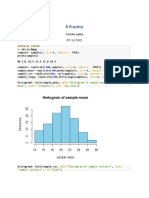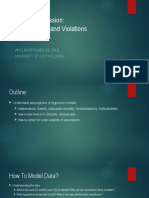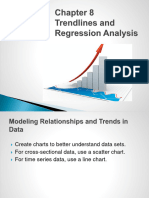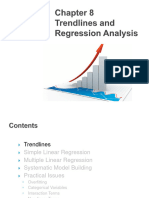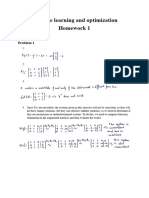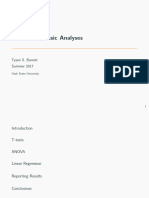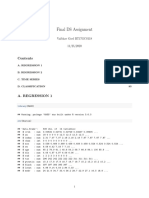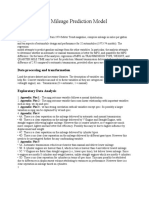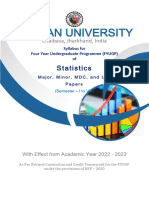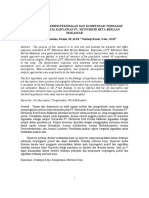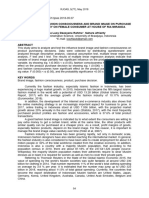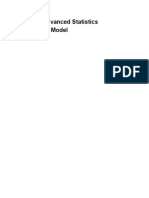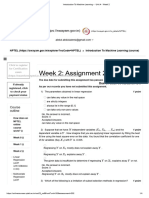0% found this document useful (0 votes)
93 views24 pagesRegression Analysis Script
The document provides problems and steps to analyze the Anscombe data set using R. Specifically, it involves:
1) Loading and encoding the Anscombe data set from Excel into R.
2) Computing summary statistics like the mean, variance, and standard deviation of the variables.
3) Building simple linear regression models to analyze the relationships between (X1, Y1), (X2, Y2), (X3, Y3), and (X4, Y4).
4) Validating the assumptions of each linear regression model, including normality, independence, homoscedasticity, and linearity. The assumptions are satisfied for the (X1, Y1)
Uploaded by
John Riel CaneteCopyright
© © All Rights Reserved
We take content rights seriously. If you suspect this is your content, claim it here.
Available Formats
Download as DOCX, PDF, TXT or read online on Scribd
0% found this document useful (0 votes)
93 views24 pagesRegression Analysis Script
The document provides problems and steps to analyze the Anscombe data set using R. Specifically, it involves:
1) Loading and encoding the Anscombe data set from Excel into R.
2) Computing summary statistics like the mean, variance, and standard deviation of the variables.
3) Building simple linear regression models to analyze the relationships between (X1, Y1), (X2, Y2), (X3, Y3), and (X4, Y4).
4) Validating the assumptions of each linear regression model, including normality, independence, homoscedasticity, and linearity. The assumptions are satisfied for the (X1, Y1)
Uploaded by
John Riel CaneteCopyright
© © All Rights Reserved
We take content rights seriously. If you suspect this is your content, claim it here.
Available Formats
Download as DOCX, PDF, TXT or read online on Scribd
/ 24


